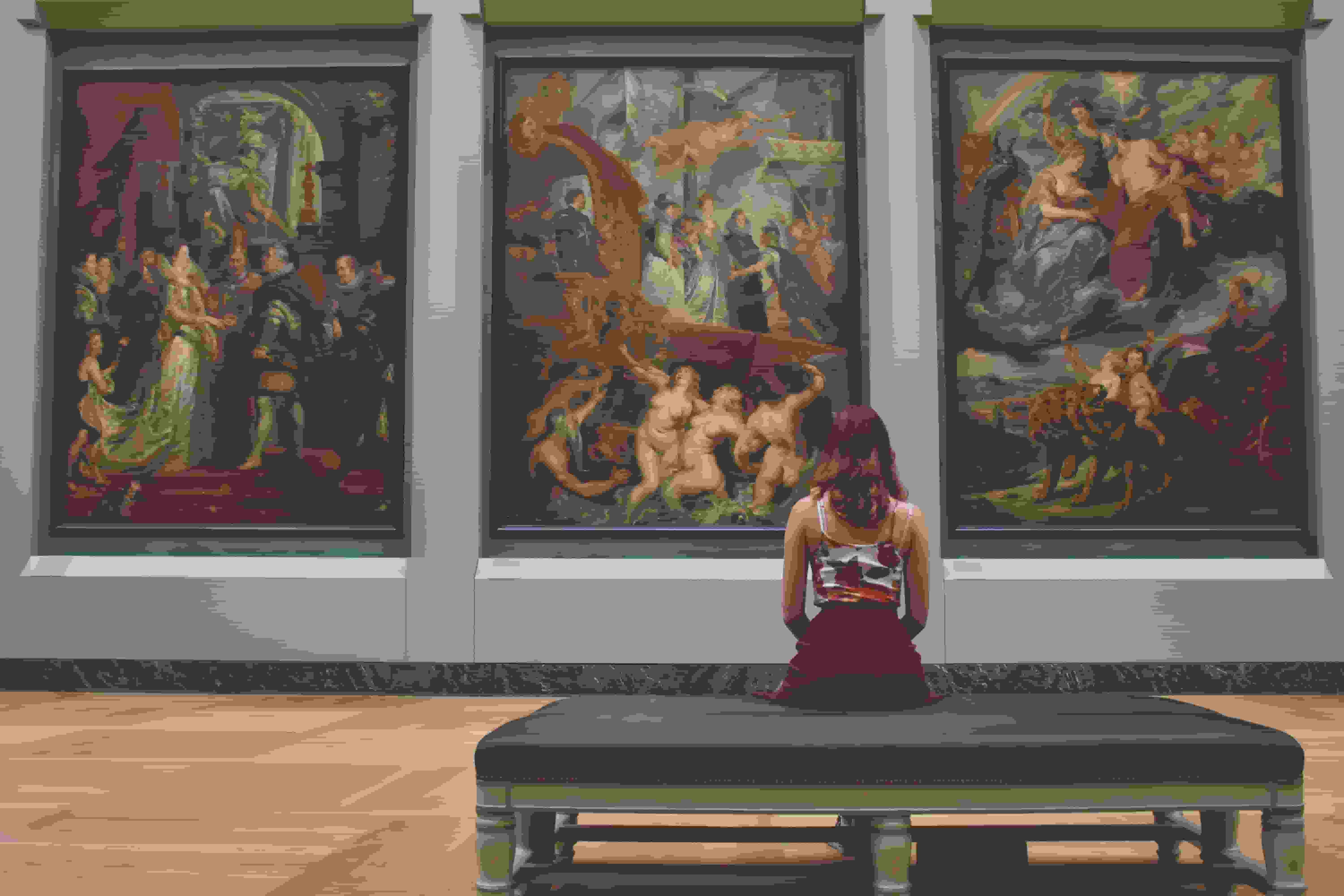Unlocking History: QR Codes for International Museum Day
Sally Wright
May 9, 2024
Museums stand as strongholds of history, art, and knowledge.
Yet, amidst the vast collections and immersive displays, there arises a modern challenge: how do we bridge the gap between traditional exhibits and today's digital-savvy visitors? Enter dynamic QR Codes.
In this blog, we'll discuss the increasing need to integrate QR codes into museums and unlock new dimensions of engagement, interactivity, and accessibility for visitors.
Power of QR Codes in Museums
Museums are not just repositories of artifacts; they are immersive spaces designed to educate, inspire, and captivate visitors. The integration of QR codes amplifies these objectives by infusing technology seamlessly into the museum experience.
Here's why:
Enhanced Visitor Engagement
QR codes transform passive observation into active participation. Visitors can scan codes to access additional information, interactive quizzes, or immersive multimedia experiences related to the exhibits. This interactivity deepens engagement and fosters a deeper connection with the museum's content.
Interactive Learning Experiences
Traditional museum plaques provide limited information about artifacts. QR codes, on the other hand, offer a gateway to a wealth of knowledge. They can link various information resources to provide a comprehensive learning journey for visitors of all ages. These includes:
- historical contexts,
- artist biographies, and even
- scholarly analyses.
Access to Additional Information
QR codes break the physical constraints of museum displays. They can lead visitors to digital archives, virtual tours, or curated online resources. Thus, expanding the scope of information beyond what's visible within the museum walls. This access to supplementary materials enriches the visitor's understanding and appreciation of the exhibits.
Promotion of Digital Inclusivity
QR codes empower all visitors, including those with disabilities or language barriers, to access information in their preferred format. Text-to-speech features, multilingual content, and audiovisual aids embedded within QR code experiences. In return, this promotes inclusivity and ensures that everyone can enjoy a meaningful museum visit.
QR Code Applications in Museums
The versatility of QR codes extends far beyond information gateways.
In museums, these digital tools can also be used to revolutionize how visitors interact with exhibits, artifacts, and historical narratives. In this section, let's explore some of the key QR code applications that are reshaping the museum experience.
Guided Tours
QR codes have redefined the concept of guided tours within museums. Visitors can embark on self-guided journeys, scanning codes strategically placed throughout the galleries to access insightful commentary, behind-the-scenes anecdotes, and in-depth analyses of showcased items. This flexibility allows visitors to explore at their own pace while immersing themselves in a curated narrative tailored to their interests.
Artifact Information
Every artifact has a story to tell, and QR codes serve as digital storytellers within museum spaces. By scanning codes associated with specific artifacts, visitors unlock a treasure trove of information, ranging from historical significance and cultural contexts to conservation efforts and restoration processes. QR codes bridge the gap between physical artifacts and the rich narratives that breathe life into them.
Virtual Exhibitions
QR codes transcend the boundaries of physical exhibitions, offering virtual extensions that amplify the museum's reach and impact. Visitors can scan codes to access virtual galleries, artist interviews, 360-degree views of exhibitions, and interactive timelines that contextualize the displayed items. This virtual immersion expands access to museum content beyond geographical constraints.
Educational Resources
QR codes serve as portals to a wealth of educational resources within museums. They can link to digital archives, educational videos, interactive quizzes, and curated reading materials that supplement the visitor's learning journey.
Teachers and students alike benefit from QR code-enabled educational experiences, fostering a deeper understanding of historical events, artistic movements, and scientific discoveries showcased in museum collections.
Teachers and students alike benefit from QR code-enabled educational experiences, fostering a deeper understanding of historical events, artistic movements, and scientific discoveries showcased in museum collections.
How to Create Museum QR Codes Using QR Code Generator Hub?
Implementing QR codes effectively in museums requires leveraging the features and tools offered by the QR Code Generator Hub. Here's a tailored guide on how museums can create and implement QR codes using this platform to maximize their impact:
- Accessing the QR Code Generator Hub: Begin by accessing the QR Code Generator Hub platform, available online. Create an account or log in to your existing account to unlock the full range of features and customization options.
- Choosing QR Code Types: Select the appropriate QR code type based on your museum's objectives. The QR Code Generator Hub offers a variety of options, including URL links, text, vCard (contact information), Wi-Fi credentials, and more. Choose a QR code type that aligns with the content you want to share with visitors.
- Customizing QR Codes: Personalize QR codes to enhance visual appeal and brand alignment. Utilize the customization features within the QR Code Generator Hub to add logo overlays, change colors, and adjust sizing. Customized QR codes create a cohesive and professional look that resonates with your museum's identity.
- Creating Engaging Content: Develop engaging and informative content to be linked with QR codes. This may include audio guides, video tours, interactive maps, detailed descriptions, curator insights, or virtual exhibits. Leverage multimedia formats to create dynamic experiences for visitors scanning QR codes.
- Generating QR Codes: Use the QR Code Generator Hub to generate QR codes based on your customized settings and content requirements. Preview the QR codes to ensure they are visually appealing and functional before downloading or printing them for implementation.
Conclusion
International Museum Day serves as a reminder of the enduring value of museums as educational institutions, cultural custodians, and community hubs. Through innovative technologies like QR codes, museums can continue to evolve, engage diverse audiences, and inspire curiosity and learning for generations to come.



